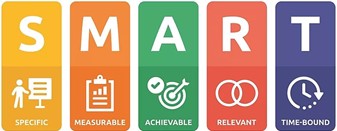
Optimising IT service reporting: measurement, processes and benefits
In the era of digital transformation, organisations rely heavily on their information technology (IT) services to operate efficiently and competitively. However, managing and monitoring these services can be challenging. To this end, it is essential to have an adequate reporting system in place. In this article, we will explore the problems associated with the lack of reporting on IT services, the importance of measuring their performance, the definition of KPIs (Key Performance Indicators) and the distribution of updated information, as well as the benefits and improvements that can be obtained by implementing an approach based on the ITIL (Information Technology Infrastructure Library) macro.
Along these lines, at Izertis we help our clients to define and create an IT service reporting system tailored to their needs.
Problematic: why measure?
Measuring the performance of IT services is essential to assess their effectiveness and efficiency. It also provides an objective and quantitative view of how the objectives and expectations are being met. By measuring, bottlenecks and areas for improvement can be quickly identified, allowing proactive action to be taken to resolve problems before they become significant obstacles. In addition, measurement allows comparisons between current services and agreed service levels (Service Level Agreement), which facilitates the monitoring of deviations and the implementation of corrective actions.
On the other hand, lack of transparency can lead to dissatisfaction among users and affect the perception of the quality of services. This can result in poor service performance, loss of customers and decreased organisational productivity.
Organisations are highly dependent on their Information Technology (IT) services
Processes and definition of KPIs
At Izertis, in the Governance area, we follow a working approach based on ITIL best practices, which provides us with a solid framework for the definition of processes and key performance indicators (KPIs).
To define the right KPIs, it is necessary to understand the business and end-user requirements, as well as the key processes and activities that drive service delivery. It is important that KPIs are SMART: Specific, Measurable, Achievable, Relevant and Time-bound.

Some examples of KPIs relevant to IT service management could be: response time and incident resolution, service availability, compliance with service level agreements (SLAs), user satisfaction, etc.
Communication and distribution of updated information
Once the KPIs have been defined and the relevant information has been collected, it is crucial to establish an effective communication and information sharing process. This implies the availability of a regular and transparent reporting system, providing up-to-date information on service performance and KPI results.
Clear and accessible communication channels should be established to ensure that information reaches stakeholders, including decision-makers, support teams and end-users.
In addition, information should be presented in a clear and concise manner, using graphs and visualisations that facilitate the understanding of the data. Regular reports, executive presentations and interactive dashboards are useful tools for communicating information effectively.
It is advisable to establish a feedback and review process, in which the results and information collected are analysed on a regular basis to identify trends, patterns and opportunities for improvement. This will allow informed decisions to be made and the necessary strategies and actions to be adjusted to optimise the performance of IT services.
It is crucial to establish an effective communication and information sharing process
Benefits and improvements achieved
The implementation of a reporting system based on the ITIL macro offers several significant benefits and improvements to IT service management. Some of these include:
- Improved visibility and control: Regular and up-to-date reporting provides a clear view of service performance, allowing problems to be identified and addressed quickly before they affect end-users.
- Informed decision-making: The availability of metrics and objective data facilitates evidence-based decision making, enabling efficient allocation of resources and implementation of corrective actions.
- Continuous improvement: Regular analysis of the results and the feedback received allows for the identification of areas for improvement and opportunities for optimisation in processes and service delivery.
- Compliance with SLAs: Reporting on IT services ensures compliance with established service level agreements (SLAs), which contributes to maintaining customer confidence and satisfaction.
- Improved efficiency and productivity: Proper measurement and reporting helps to identify and eliminate unnecessary or redundant activities, leading to greater efficiency and productivity in IT management.
We are commited to a reporting system
For this reason, at Izertis, we are committed to the implementation of a solid reporting system, which is essential for the effective management of IT services. Measuring performance, defining clear KPIs, communicating information effectively and realising the above benefits are key to driving efficiency and transparency in IT service management and ensuring business success in the digital age.

